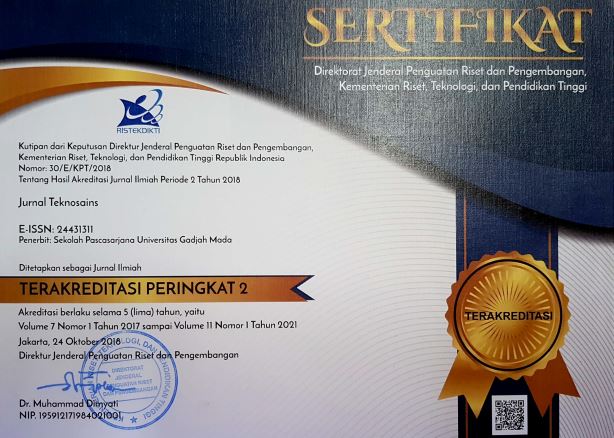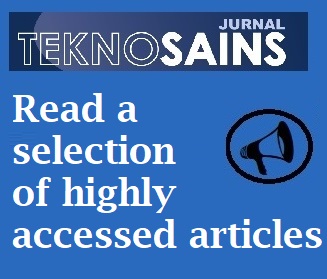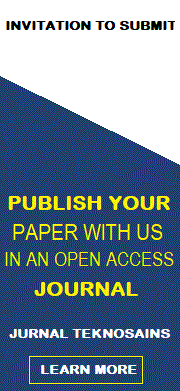Marginalized community effort to improve environmental quality of poor settlement along riverbank
Paulus Bawole(1*), Haryati Sutanto(2)
(1) Universitas Kristen Duta Wacana
(2) Universitas Kristen Duta Wacana
(*) Corresponding Author
Abstract
Currently, many people live in urban areas and more than 30% of them live in slums or squatter settlements. Urbanization is one of the most transformative trends occurring worldwide, especially in developing countries like Indonesia. At present, more than half of the total population in Indonesia lives in urban areas. The dominance of the urban population shows the urgency to make the urban environment inclusive, safe, resilient, and sustainable as it is intended to be realized through Goal No. 11 - SDGs 2030. Cities require large spaces and are a major source of wealth and centers of innovation, culture, and politics. The urban area has become the most important arena for people, including low-income communities that live in informal urban spaces that develop spontaneously. This article will share research experiences on the settlements of marginalized communities. With the help of several institutions, the communities are trying to improve the quality of their settlements to become inclusive, safe, resilient, and sustainable. The method used in this research is the descriptive-qualitative method exploring the potential and resources within urban kampong to improve the quality of urban poor settlements. With the discovery of informal urban space patterns and community efforts to improve the quality of their settlements, a sustainable development strategy can be developed to improve urban areas inhabited by low-income people.
Keywords
Full Text:
PDFReferences
[1] Kementerian PPN/ Bappenas, Terjemahan Tujuan dan Target Global Tujuan Pembangunan Berkelanjutan (TPB)/Sustainable Development Goals (SDGs). 2017.
[2] Bappenas, “Rencana Aksi Nasional TPB Tahun 2021-2024,” pp. 2021–2024, 2021.
[3] N. P. S. Nurjani, “Dinamika Kampung Kota Berkelanjutan di Tengah Pandemi Covid-19,” J. Ilm. Vastuwidya, vol. 4, no. 1, pp. 26–32, 2021, doi: 10.47532/jiv.v4i1.248.
[4] Direktur_PKP_Perkotaan_dan_Pedesaan, “Kebijakan dan Strategi Pembangunan Kawasan Permukiman Perkotaan dan Pedesaan,” Jakarta, 2017.
[5] C. Obermayr, “The Urban Book Series Sustainable City Management Informal Settlements in Surakarta, Indonesia.”
[6] A. M. Resa, Z. Saam, and S. Tarumun, “Strategi Penataan Kawasan Permukiman Kumuh Perkotaan Kampung Bandar Kota Pekanbaru,” Din. Lingkung. Indones., vol. 4, no. 2, p. 117, 2017, doi: 10.31258/dli.4.2.p.117-127.
[7] P. Bawole, “Pengembangan Infrastruktur Berkelanjutan Berbasis Komunitas pada Kampung Kota di Indonesia,” in Prosiding SENADA, 2019, pp. 5010–5017.
[8] E. Sudirman, Agus; Chandra, STUDY COLLABORATION ACTION STUDY, first. Jakarta, 2019.
[9] P. Bawole and H. B. Sutanto, “Community empowerment strategy by sustainable built environment planning in Urban Kampong,” IOP Conf. Ser. Earth Environ. Sci., vol. 126, no. 1, 2018, doi: 10.1088/1755-1315/126/1/012083.
[10] I. Yuliasari, “hakekat arsitektur kampung kota dalam konteks filosofis,” J. Arsit. LAKAR, vol. 03, no. 02, pp. 118–124, 2020, doi: http://dx.doi.org/10.30998/lja.v3i2.7541.
[11] A. C. Nugroho, “spatial enclosure sebagai dasar penataan kampung kota,” J. Arsit. Univ. Bandar Lampung, vol. 1, no. 1, pp. 26–28, doi: http://dx.doi.org/10.36448/jaubl.v1i1.289.
[12] I. N. S. Purnamasari, Wulan Dwi; Rudinanda, Oktavia Indah; Wijaya, “tipologi dan kualitas penggunaan ruang publik permukiman kampung kota Malang,” J. Tata Kota dan Drh., vol. 9, no. 1, pp. 43–50, 2017, doi: https://doi.org/10.21776/ub.takoda.2019.011.01.5.
[13] P. N. G. Akbar, “pemberdayaan masyarakat di kampung kota melalui festival seni kontemporer: studi kasus kampung bustaman, Semarang,” J. Sos. Hum. Terap., vol. 2, no. 2, pp. 135–145, 2020, doi: https://doi.org/10.7454/jsht.v2i2.91.
[14] D. Silverman, “David Silverman (Ed.) - Qualitative Research_ Theory, Method and Practice-Sage Publications Ltd (2004).pdf.” 2004.
[15] A. C. P. Sari, A. Suman, and D. Kaluge, “Implementation Analysis Of Participative Development In National Slum Upgrading Program [KOTAKU],” IJEBD (International J. Entrep. Bus. Dev., vol. 2, no. 1, pp. 17–35, 2018.
Article Metrics
Refbacks
- There are currently no refbacks.
Copyright (c) 2023 Paulus Bawole, Haryati Sutanto

This work is licensed under a Creative Commons Attribution-ShareAlike 4.0 International License.
Copyright © 2024 Jurnal Teknosains Submit an Article Tracking Your Submission
Editorial Policies Publishing System Copyright Notice Site Map Journal History Visitor Statistics Abstracting & Indexing









